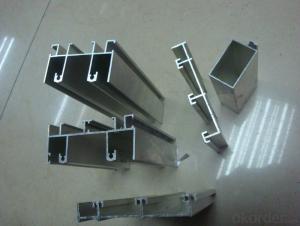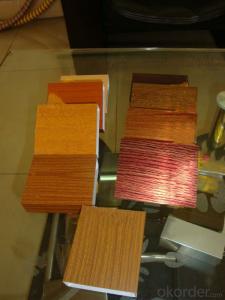ALUMINUM PRODUCT ALUMINUM PROFILES
- Loading Port:
- China Main Port
- Payment Terms:
- TT OR LC
- Min Order Qty:
- -
- Supply Capability:
- -
OKorder Service Pledge
OKorder Financial Service
You Might Also Like
ALUMINUM PRODUCT ALUMINUM PROFILES
Industrial aluminium profile
1)Material : 6063 6061 6060 and different aluminium alloy
2)Status:T4 T5 T6 or other special status
3)Surface treatment: mill finish, anodized sliver ,anodized bronze, anodized champagne, anodized black pearl, various power coating color, electrostatic sliver, electrostatic champagne, electrostatic golden, electrostatic titanium , machine polish sliver, machine polish bronze, wooden grain color, and Fluorocarbon spraying.
4)Annual capacity : 120000TON
5)Quality : China Nation Standard GB/T 5237 2008 (advanced class)
6)Use: can be widely using aluminium window, door, curtain wall, hand railing , normal aluminium profile, decorative and industrial aluminium profile
7)Advantage: Famous Brand reasonable&market price, soonest delivery and good after sale- service
8)Type of package:protection foam+heat contracted plastic film. / wooden packing / Metal pallet or depand on clientspecial requirement.
9)Payment term:T/T:30% of total value as deposite should paid by T/T within 3 days when confirmation ,and the remaining sum should be paid by T/T before delivery.L/C: 100% at sight
10)Delivery Day: 15-30days
11)Honor : CHINA FAMOUS TRADEMARK, CHINA TOP BRAND, ISO9001-2000, CHINA SQUARE&ROUND COMMITTEE DNV
- Q:Can aluminum profiles be used in green building projects?
- Yes, aluminum profiles can be used in green building projects. Aluminum is a highly sustainable material as it is 100% recyclable and has a low carbon footprint. Additionally, aluminum profiles offer various benefits such as durability, versatility, and energy efficiency, making them suitable for green building practices.
- Q:How do you prevent galvanic corrosion when combining aluminum profiles with other metals?
- To avoid galvanic corrosion when combining aluminum profiles with other metals, there exist several effective measures that can be implemented: 1. Opt for compatible metals: Choose metals that are closely ranked in the galvanic series to minimize the potential difference between them. This decreases the likelihood of galvanic corrosion. For instance, utilizing stainless steel or titanium alongside aluminum can be a wise decision. 2. Insulate the metals: Employ insulating materials, like non-conductive coatings, paints, or tapes, to establish a barrier between the aluminum and other metals. This prevents direct contact and hinders galvanic corrosion. 3. Employ protective coatings: Administer protective coatings, such as anodizing or powder coating, to the aluminum surface. These coatings serve as a protective layer, preventing direct contact between the aluminum and other metals, thereby reducing the risk of galvanic corrosion. 4. Utilize isolating washers or gaskets: When fastening aluminum profiles to other metals, employ isolating washers or gaskets composed of non-conductive materials like rubber or plastic. These washers or gaskets create a barrier between the metals, thus preventing galvanic corrosion. 5. Consider design: Construct the structure in a manner that minimizes the potential for water or moisture accumulation between dissimilar metals. Adequate drainage and ventilation can help decrease the chances of galvanic corrosion. 6. Regularly maintain and inspect: Carry out routine inspections to promptly identify any signs of galvanic corrosion. If corrosion is detected, take appropriate action to rectify the situation, such as replacing damaged components or applying protective coatings. By adhering to these preventive measures, the risk of galvanic corrosion can be significantly diminished, ensuring the longevity and performance of the combined aluminum profiles and other metals.
- Q:What do you mean by aluminum alloy T3-T8? Someone who answers me, thanks a lot
- T3~T8 refers to the heat treatment process code after extrusionAs follows:T3 solid fusion heat treatment, cold processing, and then through the natural aging to the basic state of stabilityThe utility model is suitable for cold working, straightening or leveling to improve the strength after the solid fusion heat treatmentT4The natural aging is basically stable after the heat treatmentApply to solid melting heat treatment, no longer cold processing (can be short, straight and flat, but not affect mechanical performance limit) products
- Q:Features of aluminum profiles
- MachinabilityThe machinability of aluminum profile is excellent. In a variety of wrought aluminum and cast aluminum alloys, and in the various states after which these alloys are produced, the machining characteristics vary considerably, which requires special machine tools or techniques.FormabilityThe specific tensile strength, yield strength, ductility, and the corresponding work hardening rate govern the amount of allowable deformation.RecyclingAluminum is highly recycled, and the characteristics of recycled aluminum are almost the same as those of native aluminum.
- Q:What are the impact resistance properties of aluminum profiles?
- Aluminum profiles have excellent impact resistance properties due to their inherent strength and durability. They can withstand high impact forces without deforming or breaking, making them suitable for various applications where impact resistance is crucial, such as automotive, construction, and aerospace industries. Additionally, aluminum profiles can absorb and distribute impact energy effectively, minimizing the risk of damage or injury.
- Q:Who can tell me the latest national standard for aluminum and the latest edition, -2008?
- Standard status: not implementedEnglish Title: Wrought, aluminium, alloy, extruded, profiles, for, architecture - Part,, 2:Anodized, profilesAlternatives: instead of GB 5237.2-2004Date of implementation: 2009-9-1Promulgated by: China Nonferrous Metals Industry AssociationBrief introduction: this part provides the anodized aluminum alloy building material requirements, test method, inspection rules and signs, packaging, transportation, storage and contract (or order). This part applies to the surface by anodic oxidation and electrolytic coloring or organic coloring, building profiles with Aluminum Alloy (hereinafter referred to as the heat section). Use and surface treatment of other Aluminum Alloy material may also refer to the same.
- Q:How do I install aluminum profiles?
- Follow these steps to install aluminum profiles: 1. Begin by selecting the desired location for the aluminum profile installation and ensure the surface is clean and debris-free. 2. Precisely and smoothly cut the aluminum profile to the required length using a saw or miter saw. 3. Create pilot holes at regular intervals along the marked installation area using a drill. These holes will serve as anchor points for the screws or bolts that will secure the aluminum profile. 4. Align the pilot holes on the aluminum profile with the corresponding holes on the surface. Insert screws or bolts through the holes and tighten them using a screwdriver or socket wrench. 5. If you are installing multiple aluminum profiles, repeat the process for each section, ensuring they are aligned and securely fastened. 6. Once all profiles are installed, inspect for any gaps or unevenness. Adjust and tighten the screws or bolts as necessary to ensure a snug fit. 7. Lastly, clean the installed aluminum profiles using a mild cleaning solution and soft cloth to remove any dirt or residue. Remember to wear appropriate safety gear, such as gloves and safety glasses, when handling tools and materials during the installation process.
- Q:Are aluminum profiles suitable for high-temperature environments?
- Aluminum profiles are generally unsuitable for environments with high temperatures. Despite its excellent thermal conductivity and lightweight nature, aluminum has a lower melting point compared to other metals. At temperatures exceeding 400°C (752°F), aluminum begins to soften and can eventually lose its structural integrity. In high-temperature surroundings, aluminum profiles can experience deformation, distortion, or even complete failure. This can jeopardize the stability and functionality of any structure or system relying on aluminum profiles. Nevertheless, there exist specific aluminum alloys that are specifically engineered to withstand higher temperatures. Alloys like 6061 and 7075 have enhanced heat resistance and can endure higher temperatures without significant damage. These specialized alloys are commonly employed in applications requiring resistance to elevated temperatures, such as aerospace components or certain industrial processes. However, it is essential to thoroughly evaluate the temperature requirements of a given environment before utilizing aluminum profiles. In extremely high-temperature settings, alternative materials like steel or refractory metals may be more appropriate due to their higher melting points and superior heat resistance properties.
- Q:The 50 series and the 60 series of aluminum profiles, which one is good?
- Of course, 60 of the good.60 and 50 refers to profiles, from the indoor to outdoor overall thickness of 60MM and 50MM. respectively60 of the cross section is larger than 50 1cm, much stronger. The glass gap that can be installed is also larger
- Q:Can aluminum profiles be used in display stand and podium manufacturing?
- Yes, aluminum profiles can definitely be used in display stand and podium manufacturing. Aluminum is a versatile and durable material that offers many benefits for these applications. Aluminum profiles are lightweight yet strong, making them ideal for creating portable and sturdy display stands and podiums. They can be easily customized and fabricated to meet specific design requirements, allowing for flexibility in creating unique and eye-catching display stands and podiums. Additionally, aluminum profiles have excellent corrosion resistance, which ensures that the displays and podiums will look good and last for a long time, even in outdoor or high-traffic environments. Overall, using aluminum profiles in display stand and podium manufacturing is a smart choice due to their versatility, strength, and durability.
1. Manufacturer Overview |
|
|---|---|
| Location | |
| Year Established | |
| Annual Output Value | |
| Main Markets | |
| Company Certifications | |
2. Manufacturer Certificates |
|
|---|---|
| a) Certification Name | |
| Range | |
| Reference | |
| Validity Period | |
3. Manufacturer Capability |
|
|---|---|
| a)Trade Capacity | |
| Nearest Port | |
| Export Percentage | |
| No.of Employees in Trade Department | |
| Language Spoken: | |
| b)Factory Information | |
| Factory Size: | |
| No. of Production Lines | |
| Contract Manufacturing | |
| Product Price Range | |
Send your message to us
ALUMINUM PRODUCT ALUMINUM PROFILES
- Loading Port:
- China Main Port
- Payment Terms:
- TT OR LC
- Min Order Qty:
- -
- Supply Capability:
- -
OKorder Service Pledge
OKorder Financial Service
Similar products
New products
Hot products
Related keywords































